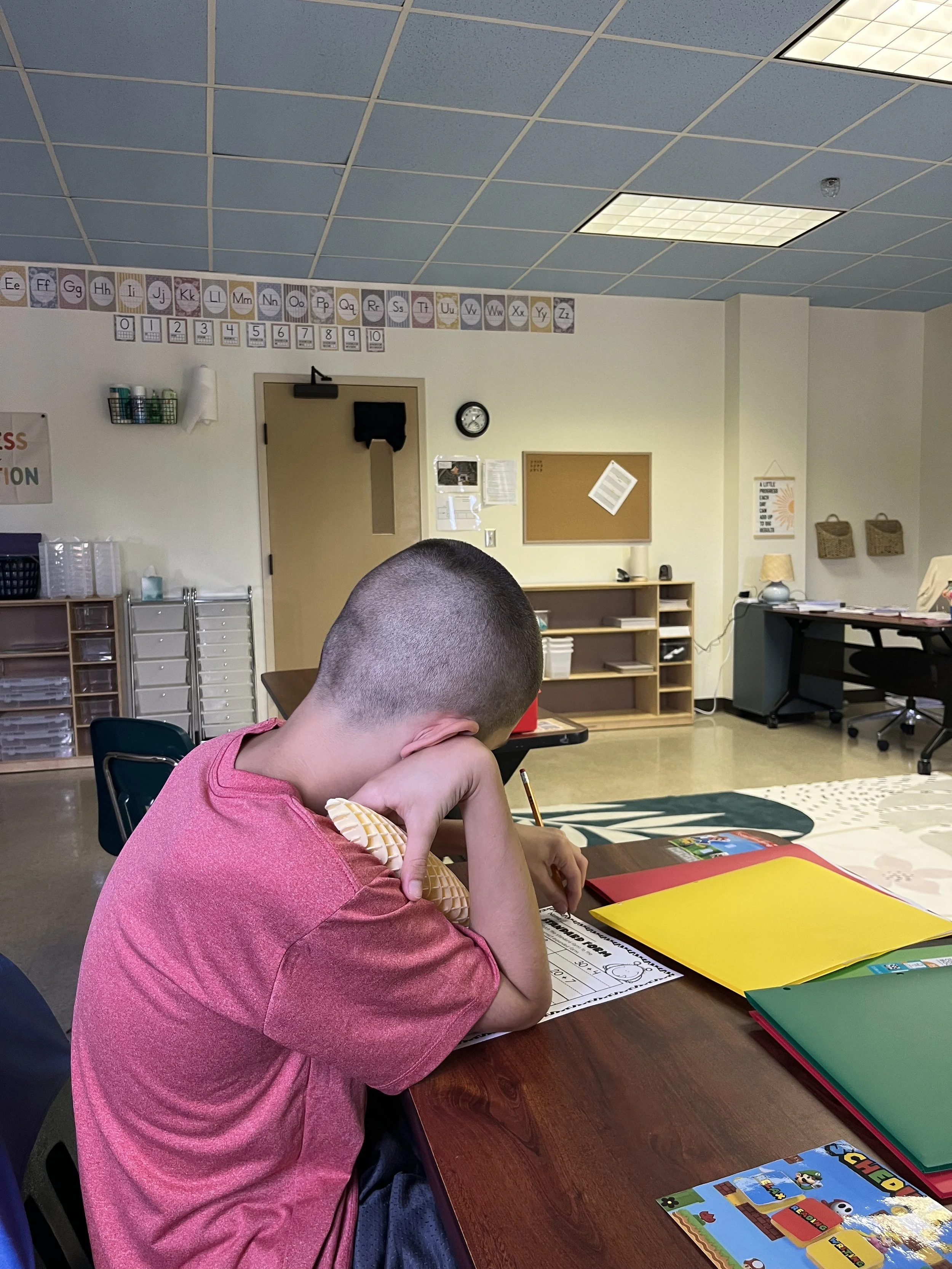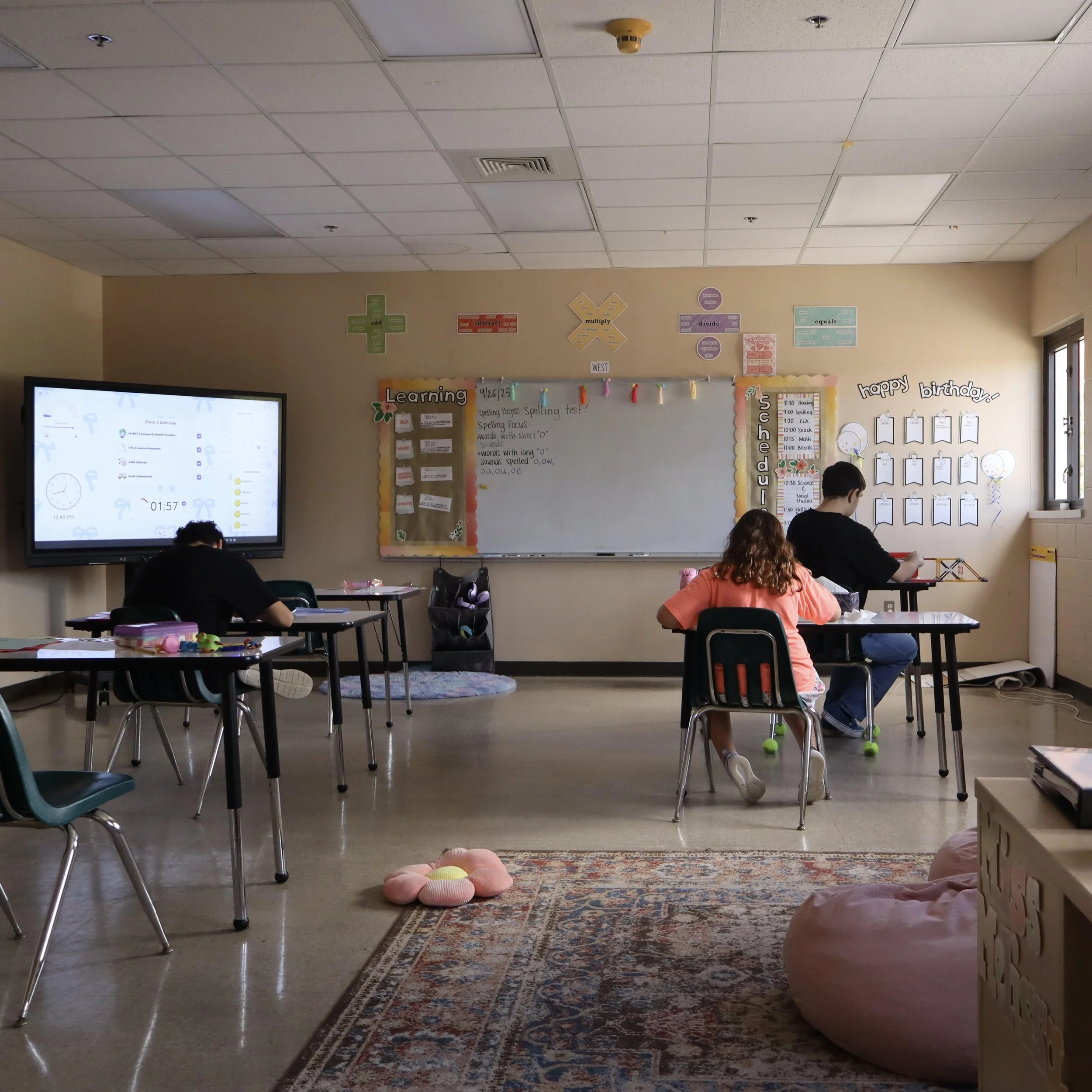Take A Look Inside Our Classrooms…
Early Learners
This environment is designed for young learners’ developmental needs in early academics while providing a structured yet flexible routine to foster their learning and growth. This inclusive space supports diverse learning styles and encourages social interactions, communication, motor development, and independence. By addressing each child’s individual needs, the classroom prepares them for future educational settings.
Intermediate 2
In this classroom, students deepen their understanding of reading comprehension, writing structure, and math concepts. Science and social studies lessons encourage curiosity through hands-on activities and real-world connections. The curriculum supports both academic growth and social-emotional development, preparing students for continued success.
Intermediate 1
This curriculum focuses on foundational academics such as early literacy, math, and motor skills, integrated with social-emotional learning and communication development. Teachers use visual schedules, interactive activities, and play-based strategies to create engaging lessons that meet each child’s unique needs.
Integrated Studies
This classroom provides a well-rounded curriculum focusing on the core subjects: ELA, Math, Social Studies, and Science. Students engage in project based learning and student led learning that encourages critical thinking skills and real world application. Students engage in interactive lessons that build foundational skills in reading, writing, problem solving, critical thinking, and understanding the world around them. This classroom promotes curiosity, creativity, and collaboration in a supportive and inclusive environment.
Life skills
This classroom is designed to foster both life skills and vocational skills, creating a dynamic and practical learning environment. Students engage in activities like cooking, hygiene routines, and basic money management tailored to their individual needs. Academic instruction is embedded throughout, with a focus on reading comprehension, quantitative concepts, and problem-solving applied in functional, everyday contexts. The curriculum promotes confidence, social growth, and real world readiness.





